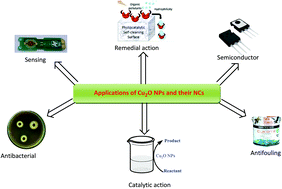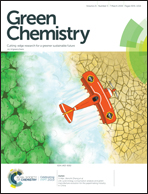A review on the sustainable routes for the synthesis and applications of cuprous oxide nanoparticles and their nanocomposites
Abstract
Nature acts as a “Bio-Laboratory”, consisting of plants, algae, fungi, yeast, etc., which are composed of bio-molecules. These naturally occurring bio-molecules play a vital role in the synthesis of cuprous oxide (Cu2O) nanoparticles (NPs) and their nanocomposites (NCs), with distinct shapes and sizes, thereby acting as a driving force for designing safer, greener and sustainable routes using less hazardous chemicals. The present review focuses on the eco-friendly protocols for the synthesis of Cu2O NPs and their NCs, techniques used for their characterisation and their various applications in organic catalysis, biosensing, environmental remediation and medicinal chemistry. The pivotal role of Cu2O NPs and their NCs in catalysing coupling (C–C and C–N), multicomponent, oxidation–reduction and heterocyclic reactions is highlighted. This emphasises their role in environmental sustainability and versatility in heterogenous catalysis. Furthermore, their use in biosensing (electrochemical detection) generates special interest in bioscience and clinical diagnosis. Their significance ensures a bridge between academic research and environmental safety.



 Please wait while we load your content...
Please wait while we load your content...